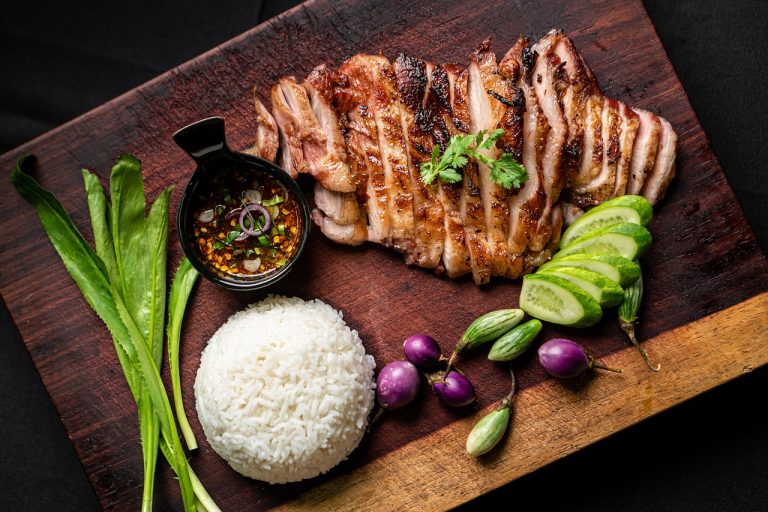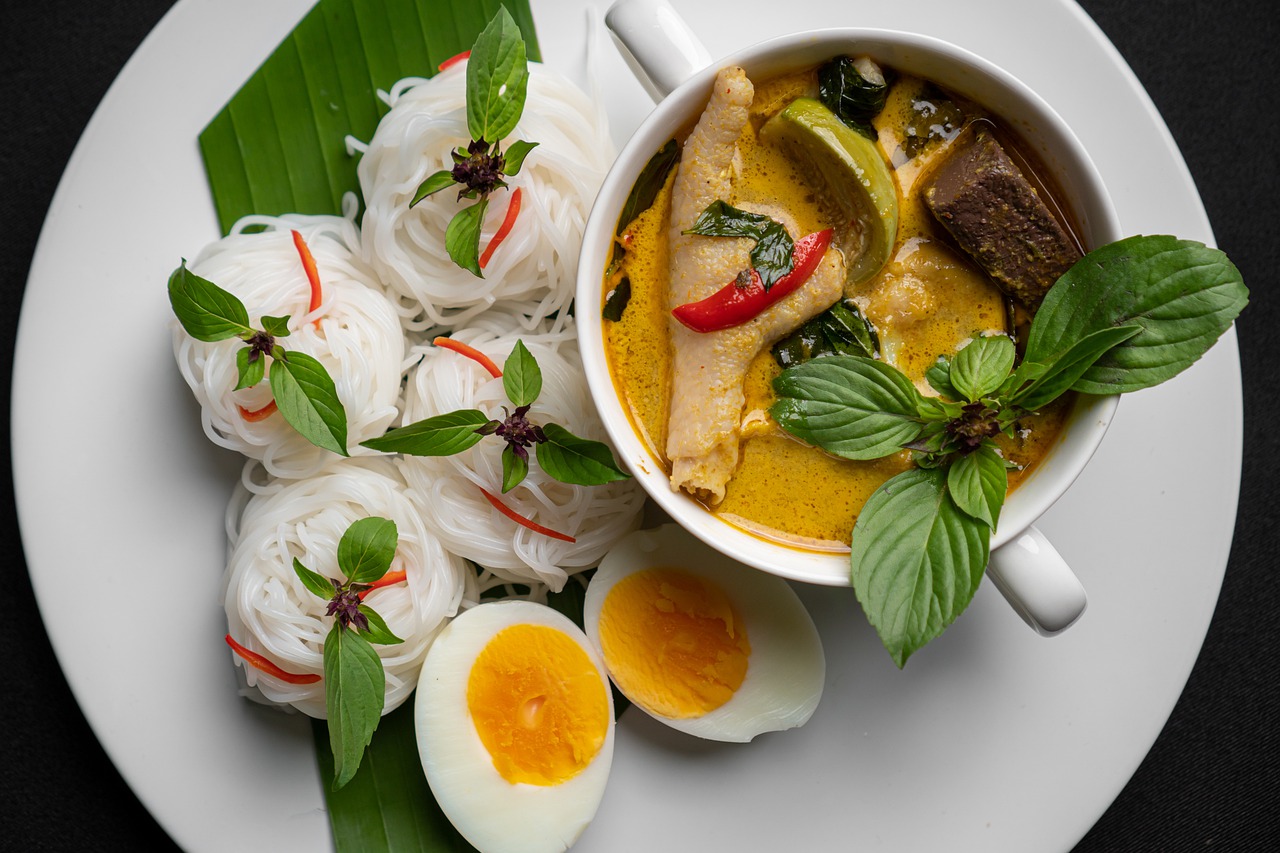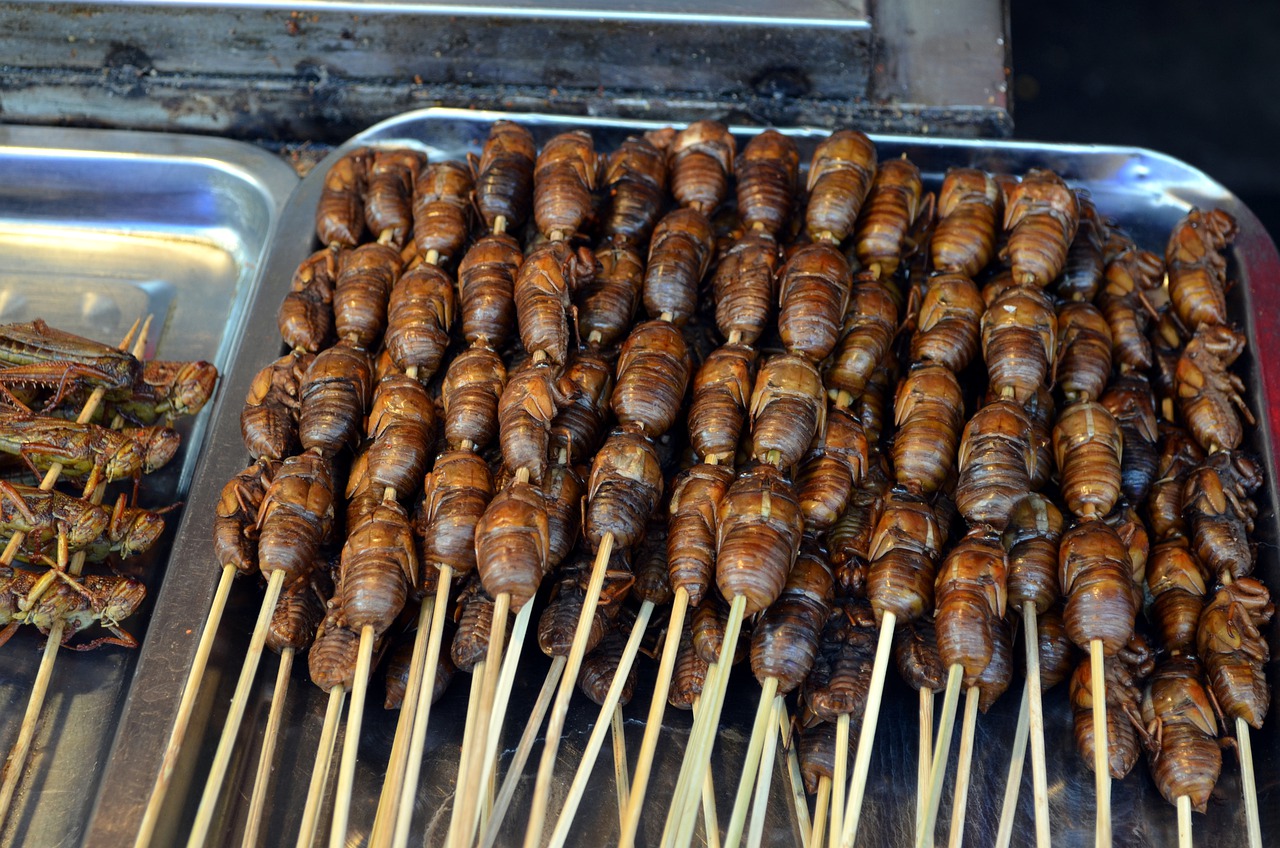
Native to Thailand, Thai cuisine has one of the most unique flavor profiles in the world. It is made using components that have a strong aroma and also a lot of spice.
There are no actual classifications for the cuisine, but they can be broken down into four categories:
- Yam. Spicy salads
- Tom. Boiled dishes
- Tam. Pounded foods
- Gaeng. Curries
All Thai cuisine consists of these four types of food, either separate or fused. These foods carry a distinct flavor profile; however, they may be different depending on your region.
Thai food in Bangkok, where there is more cultural diversity, will be a bit different from Central Thai or Northern Thai food.
As is tradition, most Thai food is eaten by hand. Most families will sit together on a mat or rug on the floor and eat together. However, most people tend to use a fork and knife to eat– a departure from the past habits.
Flavors
When talking about Thai food, five essential flavors make it up: sweet, salty, sour, bitter, and spicy. These can either exist as a solo flavor, but Thai food’s true essence only comes out when combined.
Various combinations of fresh produce, meats, spices, and sauces make Thai food shine.

The Influence Behind It All
Thai cuisine can trace its roots back to the 13th Century. Therefore, a lot of Thai cuisine that is eaten today contains flavors from ancient times.
Descending from Siamese cuisine at the time, Thai cuisine also uses many of the same elements. For example, it has different types of meats combined with herbs, vegetables, rice, and local spices.
Thai cuisine has also been influenced by Indian cuisine, most notably when it comes to the spices being used. Thus, you could take any red, green, or yellow Thai curry and struggle to tell it apart from an Indian one. However, Thai cuisine adds its twist to these dishes by adding ingredients such as lemongrass and galangal.
Common Ingredients In Thai Cuisine.
Thai food is known to contain a lot of fresh ingredients. Rice is a staple, finding its way in a vast majority of dishes. It is as essential to Thai cuisine as potatoes and bread are to European cuisine. It uses a lot of spices and herbs, most notably:
- Garlic
- Coriander
- Galangal
- Shallots
- Lemongrass
- Kaffir lime leaves
- Nam Pla (Fish sauce)
- Shrimp paste
The meat that goes into includes:
- Pork
- Chicken
- Beef
- Duck
- Mutton
- Lamb
- Wild boar
- Game birds
The last two aren’t eaten as much due to extensive loss to their habit, making them hard to come by.
All Thai dishes contain these ingredients as a base or some compliment, giving it the unique taste that Thai food is known for.

If you venture towards the more exotic side of Thai cuisine, you will also find insects being eaten. The most commonly consumed are grasshoppers, beetles, and worms. This might be hard to stomach for most, but Thai people treat it as a regular occurrence. Insects are usually enjoyed as street food, where several are put on a skewer and grilled.
Community
One of the most defining qualities of Thai cuisine is how it encourages a sense of community. Most Thai food is eaten with family, all sitting on the floor on a mat or rug. Typical street food is sold in markets with hundreds of people around – all there to enjoy the best there is to eat.
Conclusion
Thai cuisine has a lot to offer. There are so many different ingredients and flavors that can be combined in so many ways. You will always have something new that can be made using the essential elements of Thai Cuisine.
It comes as no surprise that Thai food is loved around the world. Simply because there’s so much going on with it all the time. There is so much flavor, so much variety, all at the same time.